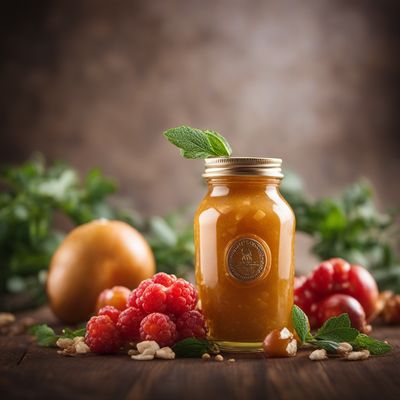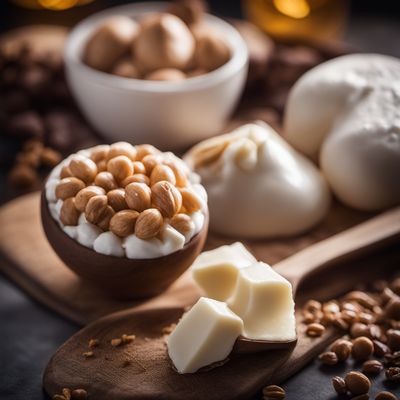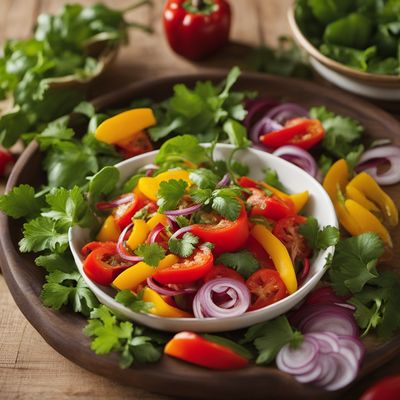
Ingredient
Wild boar liver
The Savory Delicacy: Wild Boar Liver
Wild boar liver is a delicacy that boasts a rich, earthy flavor and a tender, velvety texture. Its deep reddish-brown color and smooth surface make it an appealing ingredient for both visual and gastronomic pleasure. When cooked properly, it offers a melt-in-your-mouth experience that is truly unforgettable.
Origins and history
Wild boar liver has a long history of culinary use, particularly in European cuisines. It has been enjoyed for centuries, with recipes dating back to medieval times. In many cultures, wild boar liver is considered a delicacy and is often reserved for special occasions or festive meals.
Nutritional information
Wild boar liver is a nutrient-dense ingredient that provides a good source of protein, vitamins, and minerals. It is particularly rich in iron, vitamin A, and vitamin B12. However, due to its high cholesterol content, it should be consumed in moderation as part of a balanced diet.
Allergens
May contain allergens such as liver, which can trigger allergic reactions in some individuals. It is important to consult with a healthcare professional if you have any known allergies or sensitivities to liver or other organ meats.
How to select
When selecting wild boar liver, look for fresh, firm cuts with a deep reddish-brown color. Avoid liver that appears discolored, has a strong odor, or feels slimy to the touch. Opt for organically raised or wild-caught liver for the best quality and flavor.
Storage recommendations
To maintain the freshness and quality of wild boar liver, store it in the refrigerator at a temperature below 40°F (4°C). Keep it well-wrapped or sealed in an airtight container to prevent any odors from permeating. Use it within 1-2 days of purchase for optimal flavor and texture.
How to produce
Wild boar liver is typically not produced by amateur cooks due to the specialized nature of sourcing and preparing the ingredient. It is best obtained from reputable suppliers or specialty butchers who can ensure its quality and safety.
Preparation tips
Wild boar liver can be prepared in various ways, including pan-searing, grilling, or incorporating it into pâtés and terrines. It pairs well with bold flavors such as onions, garlic, and herbs like thyme and rosemary. Avoid overcooking to preserve its tenderness and delicate flavor.
Substitutions
Beef liver can be used as a substitute for wild boar liver, although it will have a slightly different flavor profile. The cooking techniques and recipes can be adapted accordingly to accommodate the substitution.
Culinary uses
Wild boar liver is commonly used in terrines, pâtés, and traditional European dishes such as liverwurst and liver dumplings. It can also be incorporated into hearty stews or sautéed with onions and served as a main course. Its rich flavor adds depth and complexity to various recipes.
Availability
Wild boar liver is commonly available in specialty butcher shops, gourmet food stores, and online suppliers. It may be more challenging to find compared to other types of liver, but it is worth seeking out for its unique taste and culinary potential.
More ingredients from this category

Deer liver
The Nutrient-Rich Delicacy: Exploring the World of Deer Liver

Sheep liver
The Delicate Delight: Sheep Liver

Bovine liver
The Nutrient Powerhouse: Bovine Liver

Pig liver
The Rich and Nutritious Pig Liver

Equine liver
The Delicate Delight: Equine Liver

Goat liver
The Nutrient-Rich Delicacy: Exploring the World of Goat Liver

Hare liver
The Delicate Delight: Exploring the World of Hare Liver

Rabbit liver
The Delicate Delight
Recipes using Wild boar liver

Austrian-inspired Ensalada Criolla with Apple Cider Vinaigrette
Viennese Twist on Ensalada Criolla: A Refreshing Fusion of Cuban and Austrian Flavors

Chilean-Inspired Fresh Vegetable Salad
Zesty Garden Delight: A Vibrant Chilean Vegetable Salad

Koledo - Croatian Christmas Bread
Festive Delight: Koledo - A Croatian Christmas Bread Recipe